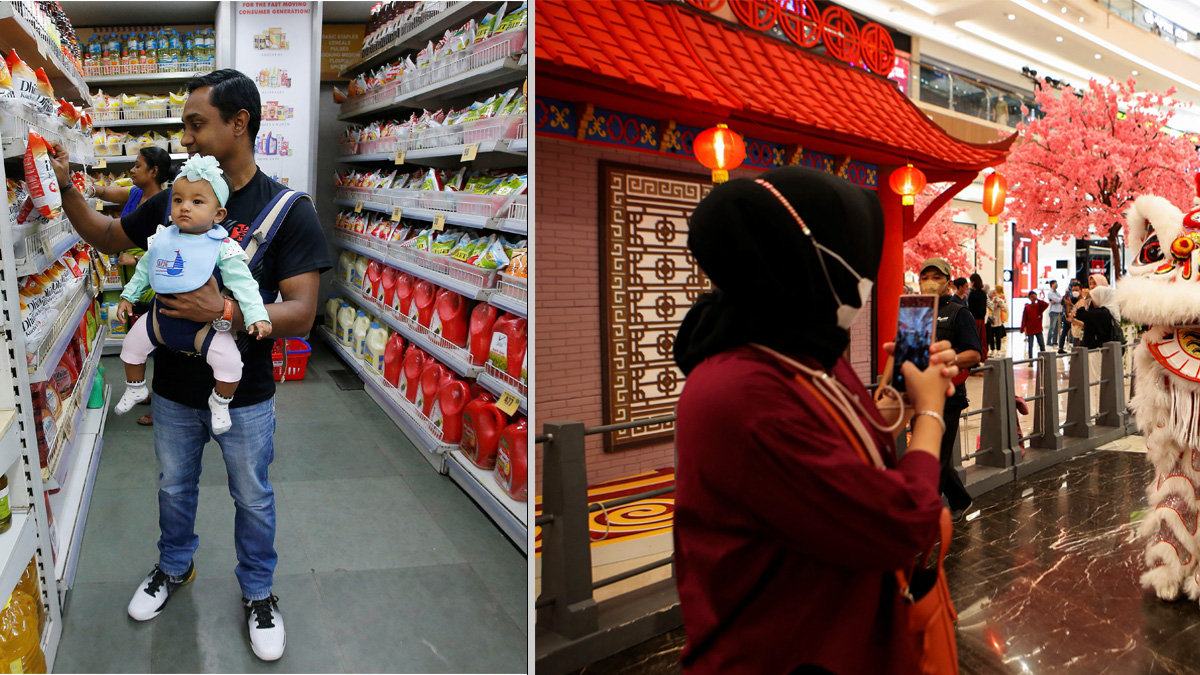India and Indonesia, two of Asia’s largest countries, are facing an unusual economic situation. Both nations are seeing their economies grow quickly, but their middle classes are shrinking. The middle class is often called the backbone of economies because they drive spending and consumption. However, many middle-class families in these countries face rising prices, stagnant wages and increasing debt. While the reasons behind this issue differ between the two nations, the impact on their economic future is significant.
The economic situation
India’s middle class, with around 300 million people, has been a key driver of urban spending. However, rising prices after the pandemic have reduced their ability to buy everyday goods. In 2024, food inflation alone hit over 8 per cent, according to Reuters. Similarly, in Indonesia, Southeast Asia’s largest economy, the middle class is under pressure. As reported by Nikkei Asia, many households are struggling with rising debt, largely due to the rapid expansion of digital lending platforms, which have disrupted family budgets.
Inflation: A shared challenge
Inflation is a major issue for middle-class families in both countries. In India, the Reserve Bank of India (RBI) has taken steps to control inflation, which has averaged 5 per cent in the past year. These measures, however, have made loans more expensive and harder to get, reducing spending on non-essential goods. For instance, sales of basic items like Maggi noodles and soaps from companies like Nestlé and Hindustan Unilever have dropped, showing how squeezed middle class budgets have become.
Indonesia faces a similar struggle but with a unique problem: informal lending. According to a 2024 report by Indonesia’s Financial Services Authority (OJK), digital loans often come with sky-high interest rates, sometimes over 108 per cent per year. This forces middle-class families to focus on repaying debts rather than spending on goods and services, creating a cycle of financial stress.
Impact Shorts
More ShortsDebt and financial struggles
Debt is a problem for the middle class in both India and Indonesia, though the reasons differ. In India, rising household debt is largely tied to buying homes and cars—goals often associated with middle-class aspirations. However, as explained by Policy Circle, this reliance on loans has left families vulnerable to changing interest rates making their financial situations more unstable.
In Indonesia, the debt issue is more severe. Over two-thirds of Indonesians aged 15 and older have taken out digital loans, according to Nikkei Asia. Many of these borrowers live on Java, the country’s most populated island, where fintech companies aggressively market high-interest loans. Without proper education on financial management, many people get stuck in debt cycles, leaving them with little money for essential goods and services.
Jobs and wages: A worrying trend
Employment and wage trends also show how tough life has become for the middle class. In India, jobs in manufacturing and services—key sectors for middle-income workers—have been hit hard by automation and digitisation. According to Marcellus Investment Managers, real wage growth, adjusted for inflation, has been less than 2 per cent annually. This slow growth means families are earning just enough to get by, often dipping into savings to cover basic needs.
In Indonesia, the COVID-19 pandemic caused mass layoffs, pushing many middle-class workers into informal jobs. While these jobs helped them survive in the short term, they offer little income stability. With limited social protections, these workers are now highly exposed to economic shocks, as highlighted in a report by Indonesia’s OJK.
Consumption patterns: A sign of stress
Changing spending habits show how much strain the middle class is under. In India, urban families are cutting back on buying branded products and dining out, focussing instead on essentials. This has hit industries like fast-moving consumer goods (FMCG) and quick-service restaurants. For example, McDonald’s reported fewer customers in 2024, according to Reuters.
In Indonesia, the middle class is also limiting non-essential spending to manage debt repayments. Purchases of electronics and leisure activities have dropped sharply, affecting retail and service industries. The Financial Services Authority notes that this trend is most noticeable among urban consumers, who now hold more than 80 per cent of outstanding digital loans.
Policy responses: Different paths
India and Indonesia are taking distinct approaches to tackle middle-class challenges. In India, the focus is on overall economic stability. The Reserve Bank of India has implemented policies to control inflation, but this has made borrowing more expensive, reducing access to affordable loans for families. Additionally, the government has prioritised large-scale infrastructure projects over direct financial support for households, as highlighted by Business Today.
Indonesia has focussed on cleaning up its digital lending sector. The OJK has set limits on the annual interest rates for digital loans and plans to reduce these rates further by 2026. However, experts from Nikkei Asia say enforcement is still weak, leaving many borrowers vulnerable. The government has also started financial literacy campaigns to teach people about the risks of high-interest loans, though the effectiveness of these programmes remains to be seen.
Cultural and structural challenges
India and Indonesia face unique cultural and structural obstacles in addressing middle-class struggles. In India, cultural norms often drive families to spend heavily on education and weddings, sometimes at the cost of financial stability, leading to high personal debt. In Indonesia, a reliance on informal networks for jobs and loans increases the middle class’s vulnerability, especially in rural areas.
The way forward
The shrinking middle class in India and Indonesia is a significant economic challenge with long-term consequences. While both countries are taking steps to manage inflation and debt, policymakers face a tough but vital mission: reviving middle-class consumption as a driving force for their economies while maintaining financial stability. Without bold action, the middle class risks losing its role as the backbone of these nations’ economic ambitions.


)

)
)
)
)
)
)
)
)



